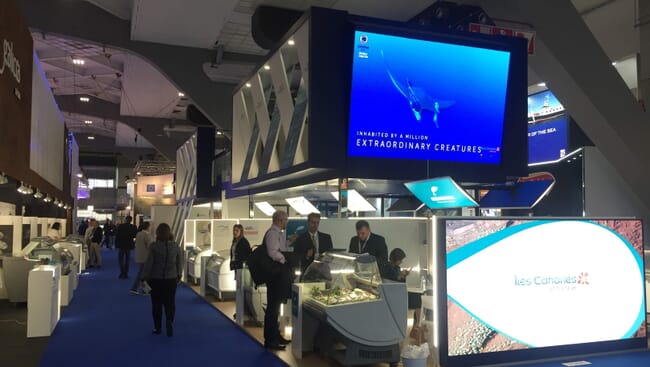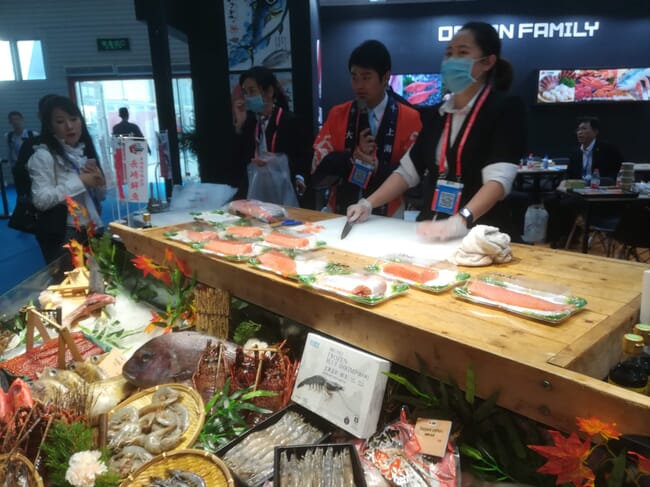
Researchers from the Institute of Aquaculture at the University of Stirling and partners studied logos, certification and claims on exhibitor booths at seafood shows in China (Guangzhou, Qingdao and Shanghai) Europe (Brussels), and the US (Boston) during 2019.
They found a clear difference in approach between the global south – mainly China, and the north – Europe and North America. Chinese messaging focussed on food safety and the quality of the product itself, while European and North American consumers were interested in the sustainability of production processes.
This year’s trade shows commence on 13 March with Seafood Expo North America in Boston, USA.
PhD researcher Wesley Malcorps, who led the study, said: “The global north showed a high interest in environmental sustainability, which is driven by consumer demand for ecolabels and sustainable production practices.

“However, China showed a higher interest in messaging around ‘safety’ and ‘quality’, which can be traced to concerns over food safety scares, due to less developed standard operating procedures than are the norm for retailers in the Europe and North America.
“The use of ‘quality’ messaging was used to strengthen associations with the perceived natural characteristics and health benefits of seafood consumption in the Chinese market.”
These understandings could support better communication between producer and consumer, as well as improve production and business practices, Mr Malcorps said.
He continued: “Business-to-business seafood traders often act as choice editors for final consumers. Therefore, it is essential to convey production processes and sustainability issues between traders and the market. An understanding of culture, messaging strategies and interpretation can improve the communication of product characteristics and in turn improve business and production practices, better meeting the expectations of the final consumer.”
The researchers worked with local speakers and the Faculty of Arts and Humanities from the University of Stirling to understand different cultural perceptions around messaging.
Mr Malcorps said: “We ended up excluding the word ‘fresh’ from our research, for example. Chinese consumers value ‘freshness’ and prefer purchasing live or freshly slaughtered fish, whereas North American consumers often prefer more processed products.
“But the Mandarin characters for seafood already contain the word ‘fresh’, so Chinese traders didn’t use the term very often at their exhibitor booths. Comparing the use of the word ‘fresh’ across seafood shows could therefore have skewed the results.”

The researchers collaborated with the University of Edinburgh, Kafrelsheikh University, South China Sea Fisheries Research Institute, Shanghai Ocean University and the University of Massachusetts Boston.
The study was carried out as part of the Green Aquaculture Intensification Project (GAIN), funded by the European Commission’s Horizon 2020 programme. The paper "Global Seafood Trade: Insights in Sustainability Messaging and Claims of the Major Producing and Consuming Regions," is published in the journal Sustainability.




